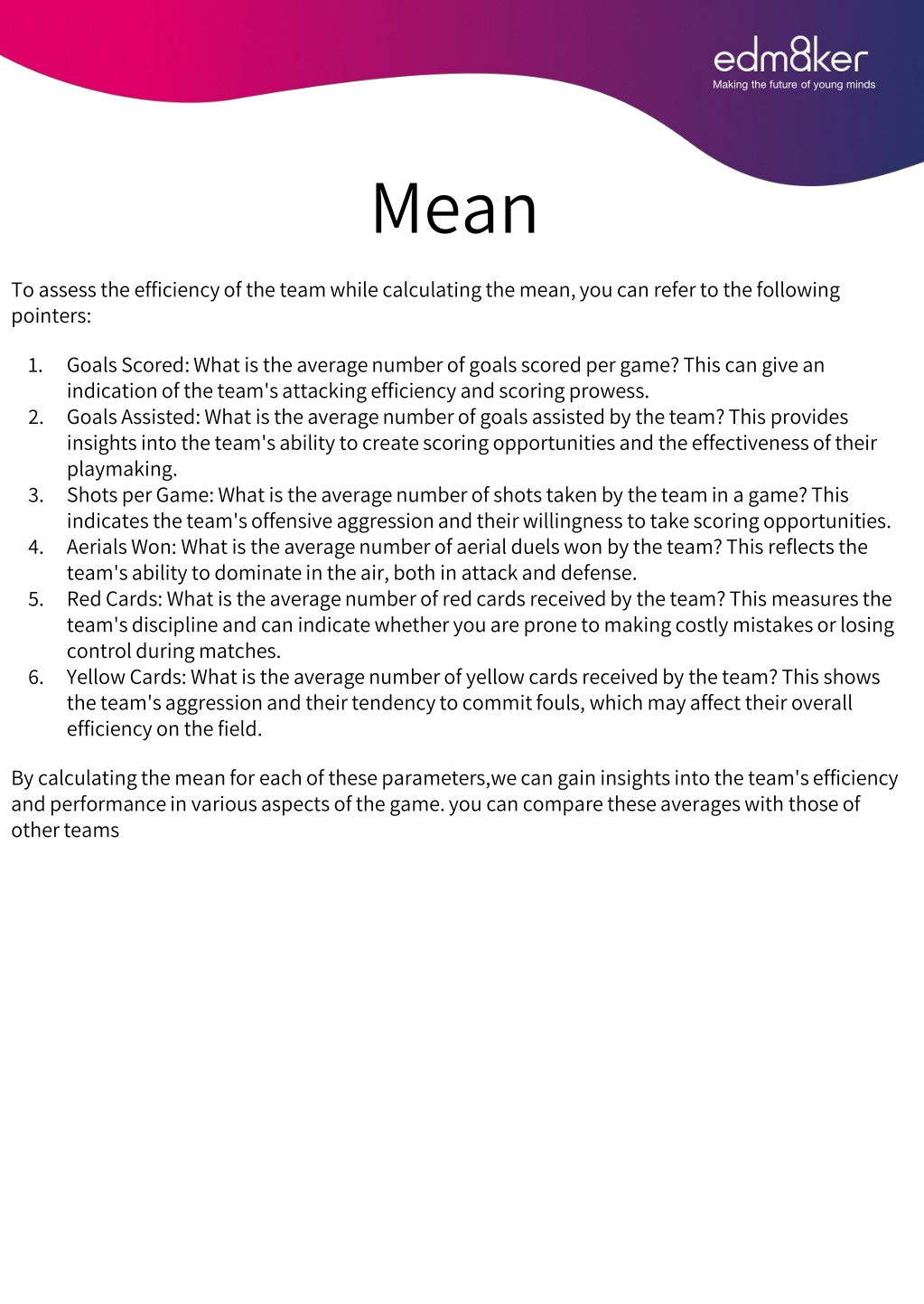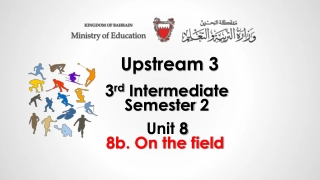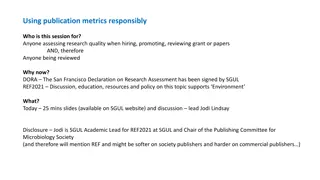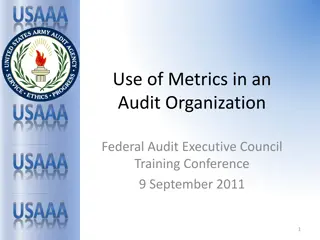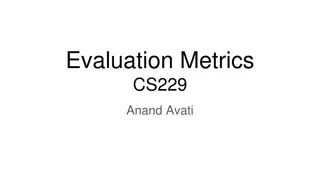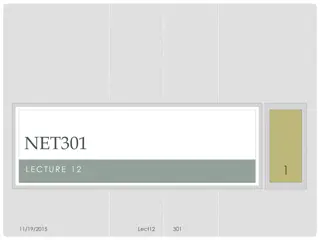Analyzing Team Efficiency in Sports: Metrics for Performance Evaluation
Assessing a team's efficiency in sports involves calculating means and modes of key performance indicators like goals scored, assists, shots per game, aerials won, red and yellow cards. These metrics provide insights into the team's attacking prowess, playmaking effectiveness, discipline, and overall performance on the field. By comparing these averages with those of other teams, one can gauge efficiency levels across various aspects of the game.
Download Presentation

Please find below an Image/Link to download the presentation.
The content on the website is provided AS IS for your information and personal use only. It may not be sold, licensed, or shared on other websites without obtaining consent from the author. Download presentation by click this link. If you encounter any issues during the download, it is possible that the publisher has removed the file from their server.
E N D
Presentation Transcript
Making the future of young minds Mean To assess the efficiency of the team while calculating the mean, you can refer to the following pointers: 1. Goals Scored: What is the average number of goals scored per game? This can give an indication of the team's attacking efficiency and scoring prowess. Goals Assisted: What is the average number of goals assisted by the team? This provides insights into the team's ability to create scoring opportunities and the effectiveness of their playmaking. Shots per Game: What is the average number of shots taken by the team in a game? This indicates the team's offensive aggression and their willingness to take scoring opportunities. Aerials Won: What is the average number of aerial duels won by the team? This reflects the team's ability to dominate in the air, both in attack and defense. Red Cards: What is the average number of red cards received by the team? This measures the team's discipline and can indicate whether you are prone to making costly mistakes or losing control during matches. Yellow Cards: What is the average number of yellow cards received by the team? This shows the team's aggression and their tendency to commit fouls, which may affect their overall efficiency on the field. 2. 3. 4. 5. 6. By calculating the mean for each of these parameters,we can gain insights into the team's efficiency and performance in various aspects of the game. you can compare these averages with those of other teams
Making the future of young minds Mean Mean of Mean of Mean of Mean of Mean of Mean of Team Goals Goals Shots per Aerials Yellow Red Cards Scored Assisted Game Won Cards
Making the future of young minds Mode When calculating the mode, you can refer to the following pointers to to gauge the efficiency of the team: 1. Shots per Game: What is the most common or frequent number of shots taken by the team in a game? This can indicate the team's preferred or most effective approach in terms of offensive efficiency. Goals Scored: Which goal tally occurs most frequently? This reveals the team's consistent scoring output and identifies their most common level of success in finding the back of the net. Goals Assisted: Which number of assists appears most often? This highlights the team's playmaking efficiency and identifies the typical level of involvement from teammates in creating scoring opportunities. Aerials Won: What is the most frequent number of aerial duels won by the team? This showcases the team's dominance in the air and their ability to efficiently contest and secure aerial challenges. Red Cards: How many red cards occur most frequently? This identifies the team's most common level of discipline or lack thereof, which can impact their efficiency by forcing them to play with fewer players. Yellow Cards: Which number of yellow cards is most commonly received by the team? This indicates the team's frequency of committing fouls or engaging in aggressive play, which can affect their overall efficiency and discipline on the field. 2. 3. 4. 5. 6. By determining the mode for each of these variables, we can gain insights into the team's efficiency tendencies and identify recurring patterns or areas of strength or weakness. This information can help inform discussions about the team's overall effectiveness.
Making the future of young minds Mode Mode of Mode of Mode of Mode of Mode of Mode of Team Goals Goals Shots per Aerials Yellow Red Cards Scored Assisted Game Won Cards
Making the future of young minds Median When calculating the median, you can encourage learners to ask the following questions to assess the efficiency of the team: 1. Height: What is the median height of the players in the team? This provides insights into the team's physical attributes and can indicate their ability to excel in aerial challenges or defensive capabilities. Weight: What is the median weight of the players in the team? This gives an indication of the team's physical strength and can impact their ability to win physical battles on the field. Goals Scored: What is the median number of goals scored by the team? This represents the middle value in the distribution of goals scored and can provide a measure of their consistent offensive output. Goals Assisted: What is the median number of goals assisted by the team? This reflects the team's ability to create scoring opportunities and highlights their playmaking effectiveness. Shots per Game: What is the median number of shots taken by the team in a game? This indicates the team's typical level of offensive aggression and can reflect their efficiency in creating scoring chances. Aerials Won: What is the median number of aerial duels won by the team? This showcases their ability to compete and succeed in aerial battles, which can be important for both offensive and defensive efficiency. 2. 3. 4. 5. 6. By determining the median for these variables, we can gain insights into the team's efficiency tendencies and identify the typical or middle ground of their performance. Comparing these values to the mean and considering the distribution of data can provide a more comprehensive understanding of the team's overall efficiency and strengths.
Making the future of young minds Median Median of Median of Median of Median of Median of Median of Team Goals Goals Shots per Aerials Yellow Red Cards Scored Assisted Game Won Cards
Making the future of young minds My Winning Team Insert Winning Team s Flag Image here. Describe with data, what makes you think that Team [insert team name] is going to win the next match. Support your answer using the central measures of tendency you analyzed for different criteria. Consider the following points: 1. Goals Scored: Team [insert team name] has the highest mean goals scored per game, indicating their strong attacking efficiency and scoring prowess. They consistently perform well in finding the back of the net. Pass Success Percentage: Team [insert team name] has the highest mean pass success percentage, highlighting their superior passing accuracy and ability to maintain possession. This enables them to control the game and create scoring opportunities. Shots per Game: Team [insert team name] has the highest mode of shots per game, indicating that they frequently take more shots compared to the other teams. This aggressive approach increases their chances of scoring goals. Aerial Duels Won: Team [insert team name] has the highest median of aerial duels won, demonstrating their dominance in aerial battles. This gives them an advantage in both attacking and defending situations. Discipline: Team [insert team name] has the lowest mean and mode of red cards received, indicating their disciplined play and ability to avoid costly mistakes. This ensures that they can maintain composure and control throughout the match. 2. 3. 4. 5. By analyzing these central measures of tendency, it is evident that Team [insert team name] excels in various aspects of the game,. Their consistent performance in these areas suggests that they are well-prepared and have a higher likelihood of winning the next match. Please use the data you have analyzed and provide specific numerical values and statistical measures to support your reasoning.
